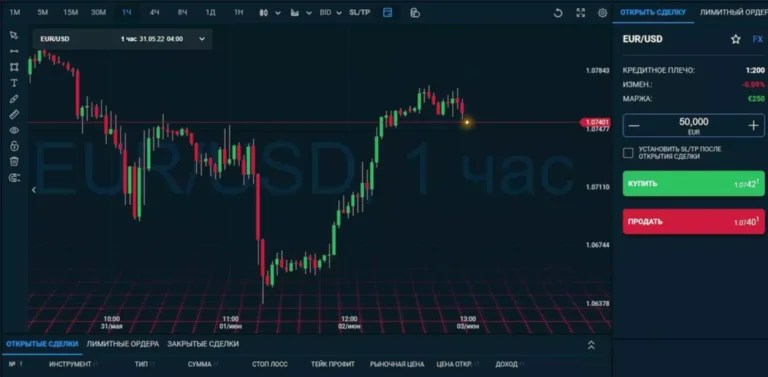Return and principal worth of investments will fluctuate and, when redeemed, may be value more or less than their unique price. There isn’t any assure that past performance or data regarding return, volatility, fashion reliability and other attributes will be predictive of future results. Morgan Stanley Wealth Management is the commerce name of Morgan Stanley Smith Barney LLC, a registered broker-dealer in the United States. Active investing is a technique that involves frequent trading typically with the objective of beating average index returns. It’s probably what you think of whenever you envision merchants on Wall Street, although these days you are in a position to do it from the consolation of your smartphone using apps like Robinhood.
Divide a fund’s energetic share or tracking error by its expense ratio and compare it to a custom benchmark or peer group. John Schmidt is the Assistant Assigning Editor for investing and retirement. Before joining Forbes Advisor, John was a senior writer at Acorns and editor at market analysis group Corporate Insight.
Disadvantages Of Energetic Investing
Equity securities may fluctuate in response to news on firms, industries, market conditions and general financial setting. If on an ascending 1 to 10 confidence scale, we are solely at 7 and even an eight, we ought to always go passive. Given the chances is active investing risky, “warm” isn’t sufficient of an inclination to go lively. Almost all you have to do is open an account and seed it with cash. Discover why Morgan Stanley Financial Advisors are completely different in phrases of
- Active/Passive Barometer report analyzes the efficiency of nearly 8,338 distinctive funds of their respective Morningstar categories, particularly success charges, annualized extra returns, and more.
- There are also a number of strengths and weaknesses of active investing.
- Active bond managers turned in a 53% success rate in 2023, a swift rebound from final year’s 30% figure.
- This is a typical method for professionals or those that can dedicate a lot of time to analysis and trading.
- But when it would not, an lively fund’s performance can lag that of its benchmark index.
- Learn monetary assertion modeling, DCF, M&A, LBO, Comps and Excel shortcuts.
In 2007, Warren Buffett made a decade-long public wager that lively administration strategies would underperform the returns of passive investing. The most cost-effective energetic funds succeeded more usually than the priciest ones. Over the ten years by way of December 2023, over 29% of lively funds in the cheapest quintile beat their average passive peer, in contrast with 18% for those in the priciest quintile.
Energetic Vs Passive Investing: What Is The Difference?
Moreover, if the fund employs riskier methods – e.g. brief selling, utilizing leverage, or trading choices – then being incorrect can simply wipe out the yearly returns and cause the fund to underperform. Despite being extra technical and requiring more expertise, lively investing typically will get it incorrect even with the most in-depth elementary evaluation to back up a given investment thesis. Active investing puts extra capital in path of sure particular person stocks and industries, whereas index investing makes an attempt to match the performance of an underlying benchmark.

Market situations change all the time, nonetheless, so it usually takes an knowledgeable eye to resolve when and how a lot to skew towards passive as opposed to active investments. Fees for each active and passive funds have fallen over time, but energetic funds nonetheless price more. In 2018, the typical expense ratio of actively managed fairness mutual funds was zero.76%, down from 1.04% in 1997, based on the Investment Company Institute. Contrast that with expense ratios for passive index fairness funds, which averaged simply 0.08% in 2018, down from 0.27% in 1997. They could be active merchants of passive funds, betting on the rise and fall of the market, rather than buying and holding like a true passive investor. Conversely, passive investors can maintain actively managed funds, anticipating that an excellent cash manager can beat the market.
For someone who doesn’t have time to analysis energetic funds and would not have a financial advisor, passive funds may be a better choice. Active investing means investing in funds whose portfolio managers select investments based on an unbiased assessment of their worth—essentially, attempting to choose the most attractive investments. Generally talking, the goal of energetic managers is to “beat the market,” or outperform sure normal benchmarks. For instance, if you’re an lively US fairness investor, your objective may be to realize better returns than the S&P 500 or Russell 3000.
Best Online Brokers For Inventory Buying And Selling: 2024
Active fund managers assess a variety of knowledge about each investment of their portfolios, from quantitative and qualitative knowledge about securities to broader market and economic trends. Using that data, managers purchase and promote assets to capitalize on short-term price fluctuations and hold the fund’s asset allocation on monitor. Navigating the investment methods landscape can be daunting, especially when deciding between active and passive investments. In 2023, actively managed funds fell wanting their passive friends, with 47% of energetic strategies surviving and beating their common passive counterpart. Passive investing is buying and holding investments with minimal portfolio turnover.

If you’re a passive investor, you wouldn’t undergo the process of assessing the virtue of any specific investment. Your goal could be to match the efficiency of certain market indexes quite than making an attempt to outperform them. Passive managers merely seek to personal all of the shares in a given market index, within the proportion they are held in that index. In common, passive investments do higher throughout a bull market because it’s troublesome for energetic fund managers to outperform main indices. However, when the market is in decline, active investing usually shines because traders have a wider array of investments to choose from, which allows them to exclude sectors or shares that are expected to underperform.
Tax-aware Methods On Your Wealth Plan
In 2013, actively managed equity funds attracted $298.three billion, while passive index equity funds noticed internet inflows of $277.four billion, according to Thomson Reuters Lipper. But, in 2019, investors withdrew a net $204.1 billion from actively managed U.S. stock funds, whereas their passively managed counterparts had net inflows of $162.7 billion, in accordance with Morningstar. Only a small percentage of actively managed mutual funds do better than passive index funds.
Almost 81% of large-cap, energetic U.S. equity funds underperformed their benchmarks. Founded in 1993, The Motley Fool is a monetary companies company dedicated to creating the world smarter, happier, and richer. The Motley Fool reaches millions of people each month through our premium investing solutions, free steerage and market analysis on Fool.com, top-rated podcasts, and non-profit The Motley Fool Foundation. There are additionally several strengths and weaknesses of active investing. Thus, downturns within the economy and/or fluctuations are seen as temporary and a essential side of the markets (or a potential alternative to lower the purchase worth – i.e. “dollar price averaging”). In other words, most of those that go for passive investing consider that the Efficient Market Hypothesis (EMH) to be true to some extent.
Should You Select Energetic Or Passive Investing?
Our companions cannot pay us to guarantee favorable reviews of their products or services. Each approach has its own merits and inherent drawbacks that an investor must take into consideration. The long tail to the left signifies the potential penalty for choosing the incorrect active actual property fund. Morgan Stanley Smith Barney LLC, its associates and Morgan Stanley Financial Advisors don’t provide legal or tax recommendation. Asset allocation and diversification don’t guarantee a profit or protect towards loss in declining financial markets.

According to trade analysis, around 38% of the united states inventory market is passively invested, with inflows rising every year. Retirees who care most about revenue might actively choose particular shares for dividend growth whereas nonetheless maintaining a buy-and-hold mentality. Dividends are cash payments from companies to traders as a reward for owning the stock. An energetic investor is somebody who buys stocks or different investments regularly. These traders search for and buy investments which may be performing or that they imagine will perform.
You can do active investing your self, or you can outsource it to professionals by way of actively managed mutual funds and energetic exchange-traded funds (ETFs). These give you a ready-made portfolio of lots of of investments. High-net-worth individuals, or these with at least $1 million in liquid financial belongings, could choose to invest with actively managed funds as a end result of fund managers goal to guard wealth during times of financial downturn. However, some actively managed mutual funds charge only a management fee, though that charge is still higher than the fees on passive funds. Many funds have reduced their charges in current years to stay competitive, however they’re nonetheless more expensive than passive funds.
